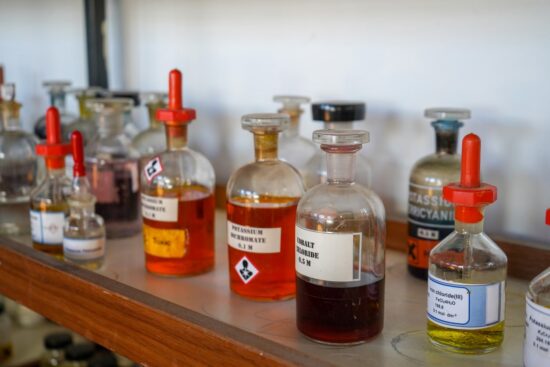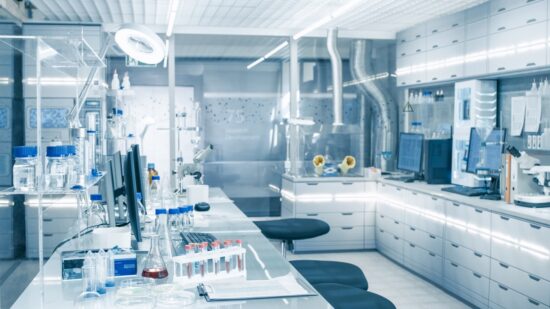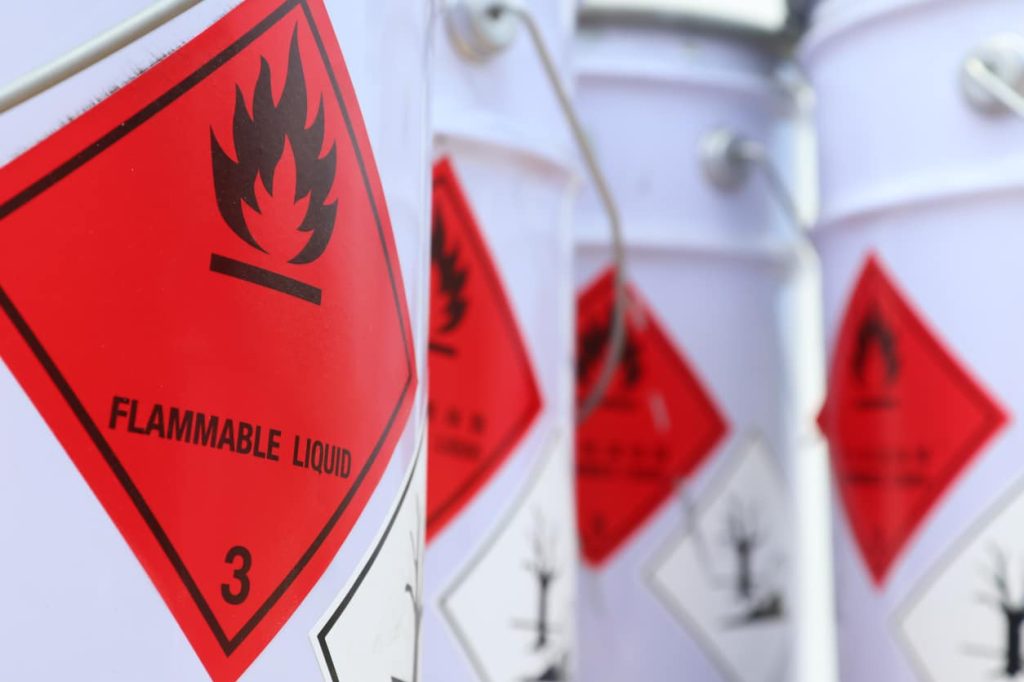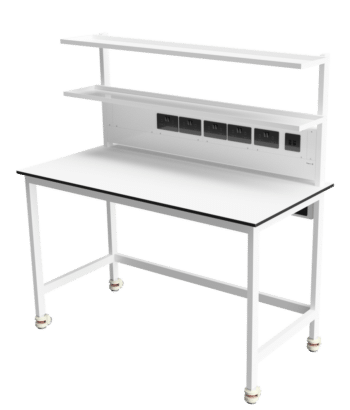To highlight the potential fire hazards and give guidance on how fire can be prevented, we’ve created this fire prevention guide specifically for science labs.
How to prevent fires in your laboratory
Store chemicals properly
Labs typically have a high potential for fires, particularly if solvents are used and stored there. Flash fires, explosions, rapid spread of fire, and high toxicity of flammable substances are all possible consequences of an emergency situation in a lab, and fire prevention is key to minimising these risks.
Storing chemicals properly is central to preventing fires in many lab settings, as something as simple as putting the wrong substance in the wrong container can lead to a major chemical incident.

Make sure you’re storing chemicals properly by carrying out the following:
- Properly labelling chemicals to avoid confusion during experiments
- Dating chemicals once they are received and opened
- Maintaining an item-by-item inventory
- Storing solvents in their proper storage, such as in fire-safe storage cabinets
- Avoiding the storage of glass chemical bottles on the floor or in corridors
- Storing highly flammable liquids at the regulation amount of 50 litres or less
- Avoid placing or storing gas cylinders near lab exit doors
- Minimising the number of flammable chemicals in work areas
- Ensuring that gas cylinders are secure. There should also only be one cylinder and one spare in the lab at any one time
Train up your staff
Staff training also plays an important role in fire prevention, helping minimise the risk of fire and stopping it from spreading if one does occur. Training staff to recognise how fires start and spread is an effective way to ensure working practices in the lab are best designed to prevent fires from occurring.
In the event of a small fire, swift and effective action can often make the difference between a small incident and a catastrophic emergency. Staff training is key to ensuring that every member of the lab is able to take effective action as quickly as possible in the event of a fire.

Ensure your staff are up to speed on fire prevention and emergency procedures with the following:
- Having a written plan that details what to do in the event of an emergency, and keeping it close to hand at all times
- Holding formal training sessions so staff can take the appropriate action during emergency procedures, know-how fires start and spread, how to use emergency equipment and what to do in the event of a fire
- Ensuring that staff follow proper working practices at all times
- Making sure staff aware of the nearest fire extinguishers, exits, fire alarms, first aid kits, emergency showers/eyewash stations and telephones
- Training staff up on the use of harmful and flammable materials
Practice good housekeeping
Good housekeeping is also vital for fire prevention in a lab, with a tidy workplace making it easier to both prevent fires from happening, and prevent them from spreading.
Practice good housekeeping in your lab by carrying out the following:
- Keeping work areas clean and uncluttered
- Putting chemicals back into storage as soon as you are done using them
- Keeping aisles, doors and corridors free of clutter at all times
- Ensuring there is no exposed wires or ungrounded circuits in the lab
- Maintaining proper ventilation
- Planning work out ahead of time to avoid procedural errors
- Avoiding the use of extension cords as a substitute for permanent wiring
- Cleaning all work areas on a regular basis

Properly maintaining equipment
If lab equipment isn’t properly used and maintained, then it can become a serious fire hazard.
Make sure your equipment is properly maintained by performing the following:
- Observing all restrictions on equipment
- Only using equipment for its intended purpose
- Grounding all metal drums and transfer vessels
- Ensuring that all fire equipment, such as extinguishers and fire blankets are in good condition and in full working order
Wear the proper protective equipment
If staff aren’t wearing the correct protective equipment when dealing with hazardous chemicals then the likelihood of fire and injury is sure to increase.
Avoid leaving things to chance by following these protective equipment best practices:
- Ensuring appropriate protective clothing and equipment is worn at all times
- Keeping all shields and hood doors in place
- Keeping lab doors and fire doors closed at all times
- Ensuring the chemical fume hoods have current inspection stickers and the sash is kept closed as much as possible
Need to complete that upcoming construction project? The team at InterFocus can help with that. For more information about our bespoke fitted labs, visit our homepage or call our team on 01223 894 833.




